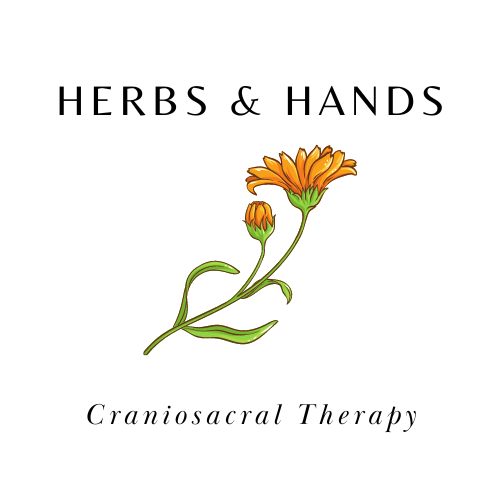Using Nettle Stings for Arthritis Pain
We do it because it works!
Why on earth would someone purposefully sting themselves with nettle? If you have ever been stung, you most likely remember the burning irritated sensation. You may also have your favorite treatments to take out that sting - Plantain is my favorite. That being said, if you like me live with arthritis and understand the consistent nagging and sometimes debilitating pain that it can bring, you are most likely looking for more effective treatments for pain management. You also most likely want something as natural and accessible as possible.
So, the short answer to why one would purposefully sting themselves with nettles is - it works!
A quick search on PubMed, the largest repository of biomedical research in the United States, brings up many different studies on nettles. Two of particular interest involve the use of nettle sting for the treatment of knee pain and pain at the base of the thumb. These are two common areas for arthritis pain that regularly impact people’s daily lives. In both studies, there was a statistically significant (scientific language for “it works”) reduction in pain and increased function. The participants in the knee study also stated that the nettle stings were a “minor irritation.” (2)
Technically, the use of nettles as a counterirritant and rubefacient is called urtication. On a side note, hives are called urticaria in medical jargon. And, the scientific name for nettles is Urtica dioica. What is in a name really?
The Science of Rubefaction
A great explanation of rubefaction (the use of counterirritant therapy) is found in Home Remedies by Drs Thrash &Thrash on page 138:
The principle of counterirritation as a treatment for pain, inflammation and infection is based on cutaneovisceral reflexes. If pain occurs in an internal organ, there is often a reduced blood supply in the organ or tissues, and the accumulation of chemical wastes, the circulation being inadequate to take the toxins away. The pain is alleviated merely by alering the circulation.
Basically, we are increasing blood flow to an area where there has been poor flow. How do you know an area isn’t getting adequate blood flow? It gets swollen, stiff, painful, and can change in color from red to white to blue. Personally, when my hands and knees are at their worst, the joints become swollen and boggy and can even be blue tinged - this is a sure sign that my circulation isn’t working very well in the area. This is also why I recommend alternating hot and cold for painful areas - to increase blood flow. The use of rubefacients (irritating herbs) can also be compared to the cupping of Chinese Medicine (4).
There is another level of pain relief theorized when using counterirritants such as nettle, bee stings, mustard, garlic, and capsacian - overstimulation of pain receptors. Have you noticed how you and your body can become accustomed to irritating things such as smells, sounds, or even people when you are exposed to them long enough? It’s not that you enjoy the irritation, but it becomes less noticeable over time. The smell in particular is due to fatiguing of the nerves that sense smell and send those signals on to the brain. With the use of counterirritants, it is theorized that you can overwhelm your pain/irritation nerve fibers causing you to no longer notice your pain quite so much.
There is another side to this picture, just as we can overwhelm a nerve momentarily and quiet its signals, when pain and inflammation are chronic, you can become hyper-sensitized to these signals and develop a condition known as centralized pain syndrome (or fibromyalgia). In this situation, any input received by the nerves in an area can be interpreted as pain - even light touch or the blowing of wind. There is no tissue damage, no threat to life or limb, but your brain doesn’t understand this - similar to allergies. If you find yourself in this situation, a different treatment such as hydrotherapy and gentle (very gentle) exercise paired with treatment to tone down your overactive nervous system is a better fit.
A note of caution:
If you have yet to experience a nettle sting, you should probably try it out before settling on stinging yourself daily for a week. Nettle is pretty easy to identify and the sting is not as harmful nor as long lasting as poison oak or ivy.
For best results, those who practice urtication typically will either rub or slap their painful joints with fresh nettle leaves. The evidence also supports daily use for at least a week with the beneficial effects becoming more pronounced after a few applications and lasting for several days afterwards (4).
Not sure if using nettle in this way is right for you? Be sure to discuss your plans with your doctor - watching for any biases of course.
Have you been using nettles, capsacian, bee stings, or other counterirritant/rubefaction treatments personally? What has your experience been? We would love to hear what you have to say.
To our health!
References
Randall, C, Randall, H, Dobbs, F, Hutton, C, Sanders, H, “Randomized Controlled Trial of Nettle Sting for Treatment of Base-of-the-Thumb Pain”, J R Soc Med, 2000 June; 93(6) 305-309 https://www.ncbi.nlm.nih.gov/pmc/articles/PMC1298033/ Accessed 5/18/2020
Randall, C, Dickens, A, White, A, Sanders, H, Fox, M, Campbell, J, “Nettle Sting for Chronic Knee Pain: a randomized controlled pilot study” Compliment Ther Med, 2008 April 16(2) 66-72 https://www.sciencedirect.com/science/article/abs/pii/S0965229907000349?via%3Dihub Accessed 5/18/2020
Thrash, A, Thrash, C, Home Remedies: Hydrotherapy, Massage, Charcoal & Other Simple Treatments The Original Text, A New Lifestyle Book, 2005
Tilgner, S Herbal ABC’s: The Foundation of Herbal Medicine, Wise Acres Publishing, 2018


